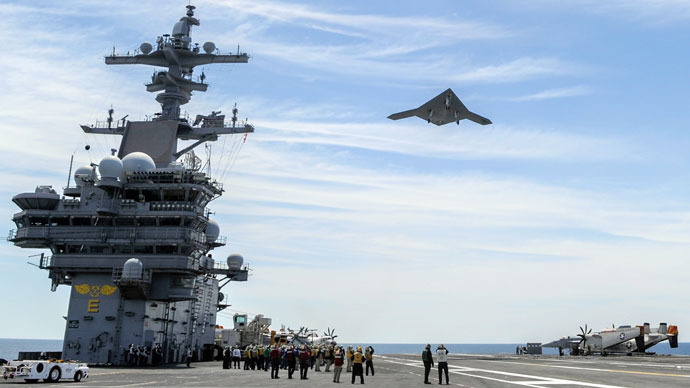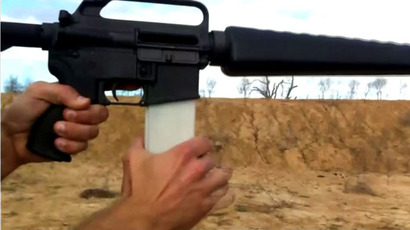Navy considers 3D-printing future fleets of drones

Three-dimensional (3D) printers are quickly proving to be capable of creating just about anything out of little more than thin air, and that could be the military’s key to keeping an endless arsenal of drones at its disposal.
Just as 3D-printed organs, pizza and even firearms are being made with the post-modern
machinery, the United States military is eyeing the up-and-coming
technology as to further their upper-hand on the battlefield.
Recently, a decorated member of the US Navy made an argument for
adding unmanned aerial vehicles and even munitions to the list of
items that can be made with little more than a well-equipped
printer and a few clicks of a mouse.
Hobbyists and engineering students have already toyed with the
idea of using 3D printers to make unmanned aerial vehicles, or
drones, but the Navy could piggyback on that idea to ensure that
UAVs made to withstand military operations are soon a reality. In
an article published this month in the Armed Forces Journal, Lt.
Cmdr. Michael Llenza discussed what could be next in the works
for the Navy.
“For the Navy, the technology promises to shift inventory from
the physical world to the digital one,” Llenza wrote.
“Instead of actual parts, a ship might carry 3D printers and
bags of various powdered ingredients, and simply download the
design files needed to print items as necessary.”
What kind of items? According to Llenza, just about anything.
“Today’s printers are generally limited to printing parts made
of just one material, and variance is a big issue,” he said.
“But the development of multiple-material devices is well
underway, and the technology is racing ahead.”
Llenza went on to site recent stories where college students at
the University of Virginia printed a UAV that was controlled by a
handheld smart phone. Scientists are still working out the kinks
with that technology, but it’s expected to only be a short while
before drones done entirely using digital blueprints, a printer
and a moldable polymer or plastic soar through the sky.
“The eventual goal is a drone that flies right out of the
printer with electronics and motive power already in place,”
Llenza wrote.
Soon enough, he said, the Navy could likely harness that into
something fit for the world’s most powerful military.
“An organic ability to print replaceable drones from ships,
forward operating bases or during disaster relief operations to
serve as targets or observation platforms could be a huge enabler
for sailors and Marines,” he wrote.
A Texas college student recently made international headlines
after his blueprints for a gun made almost exclusively with
3D-printed parts were distributed for free on the Web, prompting
condemnation from the likes of the US State Department and
congressional lawmakers. The “Liberator” handgun has since
rekindled a discussion on the Second Amendment to the US
Constitution, but an argument might not even arise of it if the
Pentagon starts printing out weaponry of its own. And according
to Llenza, that’s exactly what’s about to happen.
Llenza said he started talking to an Army colleague at the
Atlantic Council who formerly worked for the company that
produces the nitrocellulose and propellants for much of the US
arsenal and realized what exactly is in store for the future of
weapons manufacturing.
“We started talking about printing out ammunition, and he
explained that printing casings would be relatively easy, but
that the idea would be a nonstarter unless you could print the
energetic component as well,” Llenza wrote.
After chatting with researchers at a Virginia Tech laboratory
that has more than just dabbled in drones as of late, Llenza said
those experts agreed that 3D-printed ammunition is indeed an
effort worth pursuing. And given that replacement body parts and
even dinner is being done using the printers, it likely will be a
reality sometime soon.
The US Navy recently launched their first-ever drone from an
aircraft carrier off Virginia’s Atlantic coast. Previously, all
of the Pentagon’s UAV missions were carried out by the Air Force.














